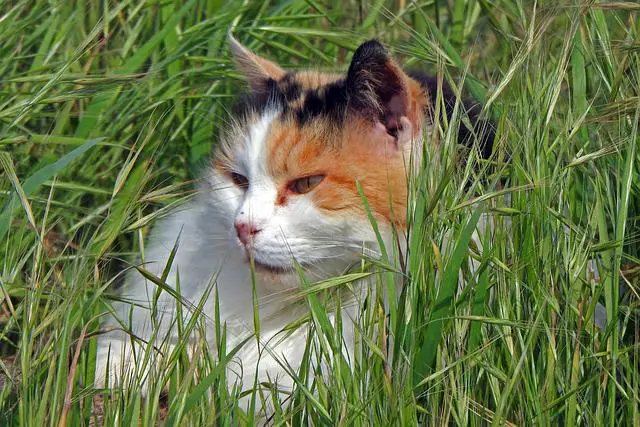Do you have a feral cat living in your backyard? Or maybe one that comes to visit your porch every day for food? If so, you may be wondering where they sleep. Feral cats can be found sleeping in all sorts of places, from abandoned buildings to dense forests. In this guide, we will explore some of the most common places feral cats sleep and provide tips on how to help them find a safe place to rest.
Feral cats can sleep in a variety of places, depending on their environment and the weather
Feral cats are adept at finding places to sleep that offer both safety and comfort.
In urban areas, they often sleep in abandoned buildings or in parked cars. In rural areas, they may curl up in barns or under porches.
In cold weather, they often seek out warm spots, such as underneath a house or in a sunbeam. And in hot weather, they often find shade to avoid the heat of the day.
Ultimately, feral cats are very adaptable creatures, and their sleeping habits reflect this ability to adjust to their surroundings.
Feral cats often sleep in trees, bushes, or other tall vegetation
Feral cats are often associated with sleeping in trees, bushes, or other tall vegetation.
However, this behavior is not always observed in feral cats. In fact, research has shown that feral cats typically sleep in a variety of locations, depending on the time of day and availability of shelter.
During the day, when temperatures are highest, feral cats will often seek out shady spots to relax. This could include trees, bushes, porches, or any other location that offers some relief from the heat.
At night, when it is cooler, feral cats are more likely to sleep in open areas such as fields or parking lots. This behavior helps them to stay warm and dry throughout the night.
In general, feral cats will choose whatever location provides the most comfort and safety at the time.
They may also sleep in abandoned buildings, sheds, garages, or under cars
When it comes to finding a place to sleep, feral cats are quite resourceful.
They often build nests out of cardboard boxes or old clothing. Some even take up residence in abandoned buildings, sheds, garages, or under cars.
In most cases, feral cats will choose a location that provides some level of shelter from the elements. This helps them to stay warm and dry, which is especially important in winter weather.
Feral cats also tend to be nocturnal, so they often sleep during the day and prowl for food at night.
In cold weather, feral cats may huddle together for warmth
When temperatures start to drop, feral cats will often huddle together for warmth.
This behavior is most commonly seen in kitten litters or mother-daughter pairs, but entire colonies of ferals will also cuddle up when the weather gets cold.
While it may seem like a simple way to stay warm, this behavior actually serves an important function in protecting the cats from predators.
By huddling together, the cats present a unified front that makes it more difficult for predators to single out a single cat.
In addition, the combined body heat of the cats helps to keep them warm and safe from the elements. As a result, huddling is an essential winter survival strategy for feral cats.
When it rains, feral cats often seek shelter indoors
When it rains, feral cats often seek shelter indoors. This is because they are not accustomed to being wet and cold, and they do not have the necessary fur coats to protect them from the elements.
In addition, when it rains, the ground becomes soft and muddy, making it difficult for feral cats to move around and hunt for food.
As a result, they often seek shelter in homes and other buildings where they can stay dry and warm. While this may be beneficial for the cats, it can be a nuisance for homeowners who do not want them to track mud into their homes.
However, there are some simple steps that can be taken to deter feral cats from seeking shelter indoors. For example, providing a sheltered area outside that is dry and warm, such as a garage or shed, can offer them an alternative to coming inside.
In addition, keeping doors and windows shut when it is raining can help to keep them out. By taking these simple precautions, you can help to keep your home free of unwanted guests during wet weather.
Conclusion
feral cats can sleep up to 18 hours a day. When they are not sleeping, they are either hunting or grooming themselves. Feral cats typically den in abandoned buildings, under porches, or in other sheltered areas.
In urban areas, feral cats often live in colonies near food sources such as restaurants or garbage dumps. In rural areas, they may den in barns or outbuildings. Feral cat populations have been known to adapt to life in a wide range of climates, from deserts to tundras. As long as there is a food source and adequate shelter, feral cats can thrive just about anywhere.
[su_box title=”Affiliate Disclosure”]This website is supported by its readers. Please assume that all links are affiliate links. If you make a purchase from one of the links we will make a commission from Amazon. Thank you.[/su_box]




